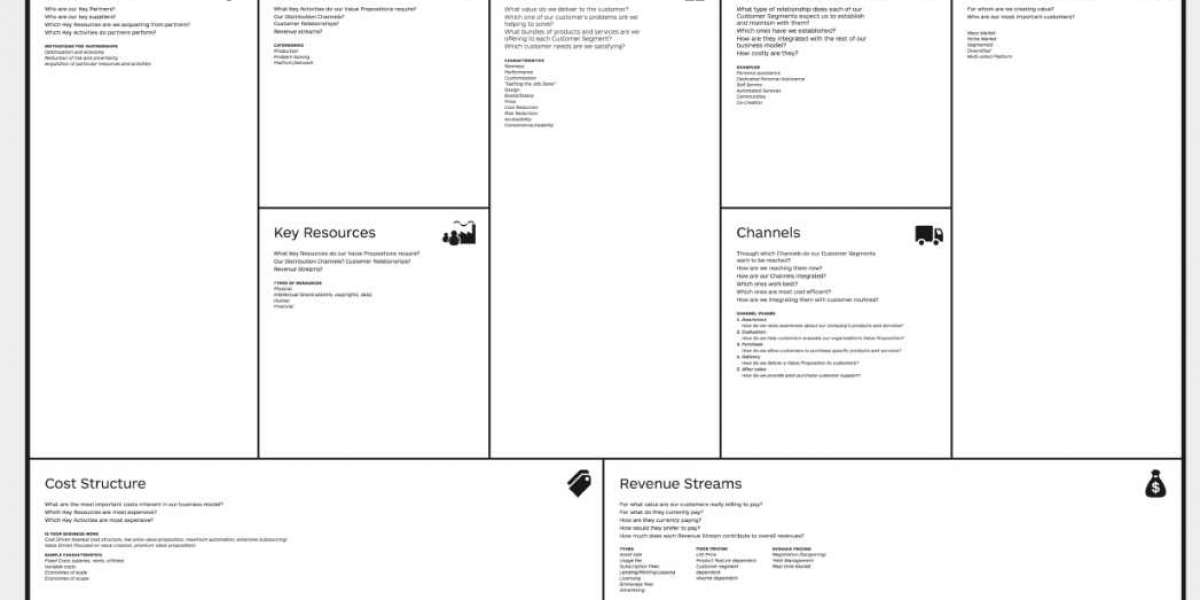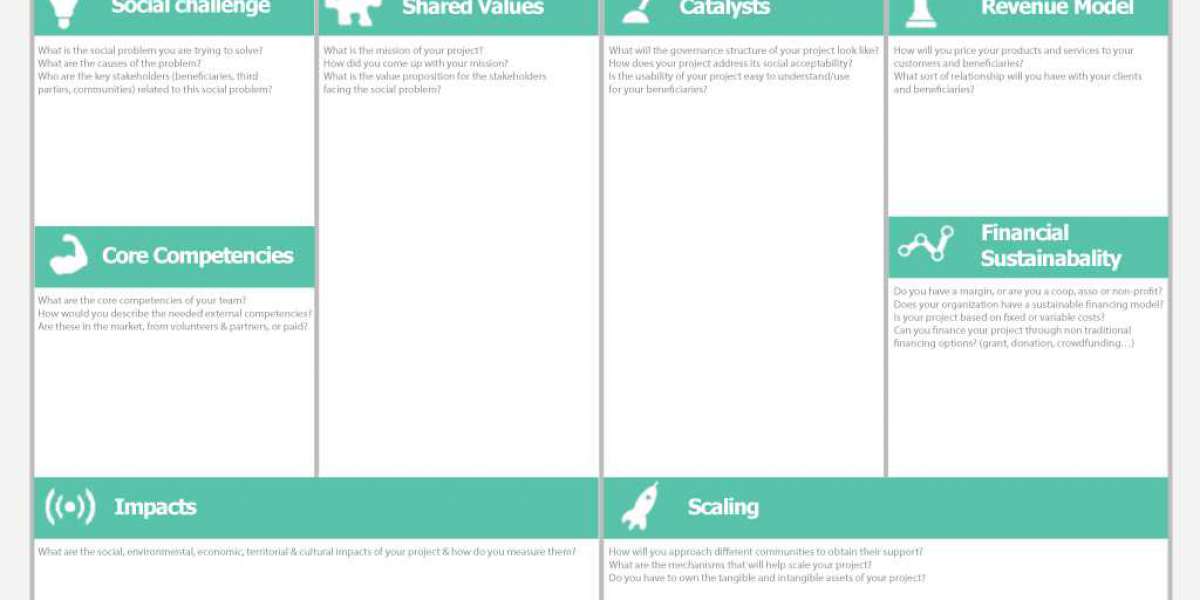DESCRIPTION OF THE BUSINESS MODEL CANVAS
The Business Model Canvas is a strategic management template for developing new or existing business models. It is a one-page tool composed of 9 elements describing a company’s value proposition, infrastructure, customers, and finances. Here is a 2 minute video providing an overview of the Business Model Canvas. It’s the best short summary to start understanding this powerful canvas.
As the video briefly mentions, the Business Model Canvas is composed of the 9 following segments, which can be filled out by answering some key questions:
1. KEY PARTNERS
Who are your key partners/suppliers?
What are the motivations for the partnerships?
2. KEY ACTIVITIES
What key activities does your value proposition require?
What activities are important the most in distribution channels, customer relationships, and revenue stream…?
3. VALUE PROPOSITION
What core value do you deliver to the customer?
Which customer needs are you satisfying?
4. CUSTOMER RELATIONSHIP
What relationship that the target customer expects you to establish?
How can you integrate that into your business in terms of cost and format?
5. CUSTOMER SEGMENT
Which classes are you creating values for?
Who is your most important customer?
6. KEY RESOURCES
What key resources does your value proposition require?
What resources are important the most in distribution channels, customer relationships, revenue stream…?
7. DISTRIBUTION CHANNEL
Through which channels that your customers want to be reached?
Which channels work best? How much do they cost?
How can they be integrated into your and your customers’ routines?
8. COST STRUCTURE
What are the largest cost in your business?
Which key resources/ activities are most expensive?
9. REVENUE STREAM
For what value are your customers willing to pay?
What and how do they recently pay? How would they prefer to pay?
How much does every revenue stream contribute to the overall revenues?
METHODOLOGY
Using the Business Model Canvas is not a science, but you do need to understand the basic concepts underlying its elements. The steps below will help understand how to design your business model using this canvas.
VALUE PROPOSITION TARGET CUSTOMER
A good way to start is by defining your Value Proposition and Target Customer segments. These can be developed together as they are completely interdependent. The value proposition is a statement describing the benefits delivered by your company/product to the target customer, and defining this value proposition leads naturally into a discussion about
CUSTOMER RELATIONSHIPS
Consider the kind of relationship you will develop with your customers (subscription, contract, transaction based, etc.). You not only have to ask what kind of relationship is best for your business, but also to consider which kind of relationship your customer would like to have with your company or your product.
DISTRIBUTION CHANNELS
Think of how you will reach your customers. This channel has to make sense with your value proposition and the kind of relationship you want to develop with your customers.
KEY RESOURCES
Now that you have developed a good understanding of the customer side of the business model, you can start thinking of the key resources you need in order to deliver that value proposition. These include skills, patents, assets and expertise that you may be the only one to hold.
PARTNERS - ALLIES
Think of the various stakeholders that could help you achieve a sustainable business. The third parties and suppliers who have key capabilities to complement your resources and bring added value to your offering.
KEY ACTIVITIES
Describe the most important activities and processes used to create your product and serve your customers. This includes critical tasks and timelines, the people and skills required, and your organization’s core processes.
REVENUE STREAMS
You can then move on describing the streams through which your revenues will arise. Consider your channels and their implication on the kind of sale or service offered to your customers. Will the revenue come from recurring or one-off transactions?
COST STRUCTURE
Finally, try to evaluate the costs of running your business according to your business model as determined by the key activities, resources, partners and channel. How does the cost structure affect your profitability?
GO FURTHER THAN THE CANVAS
We strongly advice anyone interested in or considering using this tool to go on http://www.businessmodelgeneration.com to find out more information on the Topic. If your plan is to use exclusively the Business Model Canvas and related tools by Alexander Osterwalder and Yves Pigneur, you will find great materials and tools on their website.
Business Model Generation: A Handbook for Visionaries, Game Changers, and Challengers written by Alexander Osterwalder Yves Pigneur explains this visual method helping entrepreneurs develop business models more in details. It goes through the various sections and explains their interconnections. A must read!



